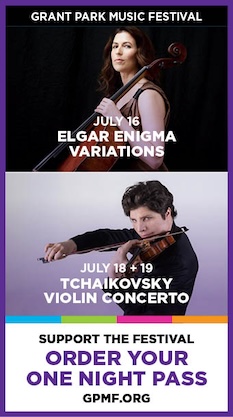CSO, Goerne and van Zweden join forces for unconventional night of symphony and song
If the goal of the Chicago Symphony Orchestra’s concert Thursday night at Symphony Center—featuring baritone soloist Matthias Goerne and conductor Jaap van Zweden—was to shed new light on familiar works, it was only partly successful.
The first half was dedicated to performances of lieder by Schubert and Richard Strauss. Three of the Strauss lieder—including the well-beloved “Morgen!”, with which Goerne and van Zweden closed the first half—were orchestrated by the composer himself. However, the remaining Strauss songs and all of the Schubert songs were performed in arrangements by other composers, with the best of the retooled Schubert songs by Brahms, Reger, and Webern. Many of these transcriptions were CSO premieres.
Some of these–such as Matthias Spindler’s orchestration of “An Sylvia,” which opened the concert–didn’t give the orchestra much to do. But in those selections in which the orchestra is a more equal partner to the vocalist (e.g. the songs Strauss himself orchestrated), van Zweden coaxed luminous textures from the CSO, without ever overpowering Goerne. If there was any difference in approach between singer and conductor, it was only that Goerne seemed to wish to linger at certain moments longer than van Zweden and the orchestra did, and the orchestra occasionally got ahead of him.
The conception of the program was something of a liability. Every lied in the first half was a slow-to-medium-tempo, wistful, lyrical number, including four songs devoted to celebrating shades of light in the sky (“Traum durch die Dämmerung,” “Freundliche Vision,” “Im Abendrot,” and “Morgen!”). Entirely absent was anything energetic, dramatic, or humorous. In their own song cycles, Schubert and Strauss were more careful than this to provide a variety of moods.
The Brahms arrangement of “Greisengesang” became an automatic highlight, by virtue of being the only song in which Goerne and van Zweden created the sense of a narrative trajectory. The opportunities to do the same in the Webern arrangement of “Tränenregen” from Die schöne Müllerin were passed up: Goerne did not change his mode of delivery to paint the different objects and characters in the song, not even the miller-maid herself when she speaks at the end; and van Zweden underplayed the vital key changes from minor, to major, and back that grant the ending its pathos.
Goerne is not a special-effects-driven singer. His interpretations derive their strength from a feeling of naturalness, both in the quality of his voice and in his phrasing. He attended to Strauss’s phrase shapes with exactly this naturalness, subtly swelling or subsiding at each modulation to underline it. These gestures were beautiful in “Das Roseband,” but by the time we were halfway through the program, we’d heard them several times already in too-similar situations. Goerne’s warm sound blanketed every song in beauty, but not even this persuasive artist could prevent the entire half of a concert devoted only to beauty from cloying.
Warhorses are tricky business, and Beethoven’s Fifth Symphony—which occupied the second half of the program—is the warhorse of all warhorses. One has to balance strong audience expectations of how the piece is supposed to sound with one’s own desire to put an individual stamp on the piece.
Van Zweden’s first two movements were certainly unconventional: fleet-footed and energetic, but with little drama or impact. The first movement in particular was balletic and graceful; no existential soul-searching or Fate knocking at the door for the Dutch conductor.
In both movements, van Zweden downplayed Beethoven’s dynamic contrasts, and played up dynamic effects of his own invention. Instead of walloping the first cadence of the first movement (when the violins hold their G and the rest of the orchestra cuts out), van Zweden had them start the note softly and then do a swooping crescendo. At two crucial moments in the second movement (the forte section of the third run through the first theme and the bassoon solo in the coda), van Zweden suddenly dropped the dynamics as a surprise effect. On the other hand, the spooky pianissimo section in the development of the first movement and each sudden explosion of fortissimo from pianissimo when the first theme turns into the second theme in the second movement were all breezed through perfunctorily.
The last two movements came off significantly better. The Scherzo, in particular, was excellent. Every episode, from the fiery horns in the main theme to the rugged strings in the trio section, came off well, with the spectral reprise dancing with a real sense of swing. Van Zweden still drew attention to tiny details in the finale, but this time, the spotlighting didn’t interfere with the dramatic sweep of the movement, and so the symphony ended in a satisfying blaze of glory.
This program will be repeated 8 p.m. Saturday and 3 p.m. Sunday. cso.org; 312-294-3000.
Posted in Performances


